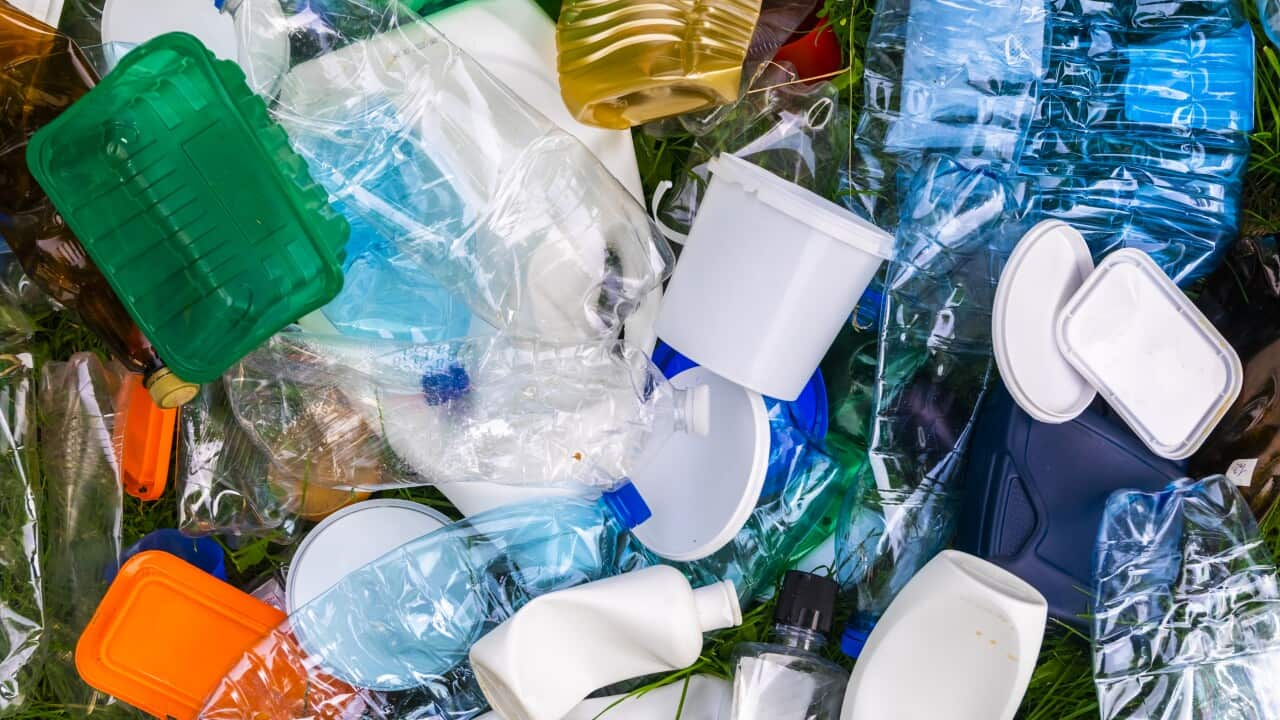Key Points
- When synthetic fabric is washed, millions of tiny plastic fibres can be released.
- The smaller of these fibres, which can be microscopic, cannot be retained by conventional wastewater treatment plants.
- Upon entering waterways, they negatively impact small animals and their ecosystems.
For the sake of the environment, Australian researcher Shima Ziajahromi wants people to do less laundry.
Dr Ziajahromi is a research fellow at Griffith University's Australian Rivers Institute.
She studies and says people often aren't aware that many common items of clothing shed tiny bits of plastic.
"When we wash a synthetic fabric in a washing machine, millions of tiny plastic fibres can be released into water, which goes down the drain," she told SBS News.

Shima Ziajahromi, a research fellow at Griffith University's Australian Rivers Institute, looks at how the accumulation of tiny microplastic particles in waterways impacts organisms and their ecosystems. Source: Supplied
What are microplastics?
Dr Ziajahromi described microplastics as tiny pieces of plastic within the size range of one to 5,000 micrometres.
A micrometre is one thousandth of a millimetre, so while the bigger microplastics of a couple of millimetres or more may be visible, many are so small they are invisible to the naked eye.
What are microplastics doing in clothing?
Many fabrics used to make clothing are made of plastic materials.
"Synthetic fibres are man-made fibres, Most of them are prepared from raw petroleum material called petrochemicals," Dr Ziajahromi said.
The most common synthetic fabrics used in clothing are polyester and nylon.
The International Wool Textile Organisation estimated synthetic fibres made up 63 per cent of the global fibre market in 2019, and this was expected to grow to 73 per cent by 2030.

Synthetic fibres are used for much of the clothing in wardrobes around Australia. Source: Getty / Kristina Strasunske
What harm can such small pieces of plastic do?
Any sort of friction, even just moving while wearing clothes, can release tiny particles from synthetic clothing into the environment.
Dr Ziajahromi said activities such as washing clothes and drying them in a dryer usually released the most microplastic particles from clothing.
"A study showed that a typical five-kilogram washed load of polyester fabric can release approximately six million microplastic fibres," she said.
"Some fibres especially smaller ones, cannot be retained by our conventional wastewater treatment plants, and therefore billions of microplastics are making their way to our aquatic systems, accumulating in fresh and marine water and sediment."
The presence of tiny plastic particles in waterways raises a number of issues.

Microplastics have been found in sediment samples taken from the sea floor. Source: Getty / CHARLY TRIBALLEAU
"They are very tiny and they can be mistaken for food by a variety of organisms in the water, from small zooplankton [to] fishes and large mammals, and they can pose risk by blockage of their digestive tract and reducing their food uptake."
Dr Ziajahromi said a big concern was around bioaccumulation, where plastic is retained in an animal's body, which is then .
In addition to this, the particles can leach chemicals into the water and surrounding environments.
Their presence in certain environments can also be an obstacle for microorganisms.
Dr Ziajahromi's research looking at zooplankton called daphnia found the adverse effects were not only due to ingestion, but also external physical damage as the organisms had been found dead after becoming entangled in tiny plastic fibres.
And it's not just marine environments that are being invaded by microplastics.
Dr Ziajahromi said they had also been found in air, likely having come from textiles that make up clothing and furniture.
"There was a research showing a domestic dryer can release up to 120 million fibres per year into our indoor air, so we are also breathing them in, but the effect to human health is largely unclear at the moment," she said.
What can consumers do about microplastics in our clothes?
Shoppers can choose natural fibres such as cotton, wool, hemp or bamboo to avoid dispersing microplastics into the environment.
"I usually try to buy natural clothes rather than synthetic, but it's not always possible," Dr Ziajahromi said.
"There are some steps that we can do to limit microplastic emissions from our clothes and to reduce them at the source.
"We need to make people aware of what they can do to reduce microplastics right at the source, rather than when they are released into our aquatic system because we can't filter the whole ocean," she said.

Changing the way you do laundry can reduce the amount of microplastics being released into the environment. Source: Getty / Kinga Krzeminska
"The fewer laundry cycles, the less microplastics are released from our clothes, so we have to wash mindfully," she said.
Dr Ziajahromi also suggested reducing washing time as longer washes released more microplastics.
Washing clothes in cold water is also preferable as research has shown high water temperatures can increase the amount of microplastics released from synthetic clothing.
Is there a solution to plastic pollution?
While natural fibres are the more environmentally friendly option, Dr Ziajahromi said they were not without issues.
"During the manufacturing of natural fibre, they also add some chemicals and dyes, so when they degrade quicker, these chemicals can also leach into the water organisms quicker," she said.
Dr Ziajahromi suggested government regulation of the use of synthetic fibres was the only realistic way to reduce the amount of microplastics from clothing entering waterways.
She said while plastic remained a cheap option for manufacturers, it would continue to be present in most clothing items.










